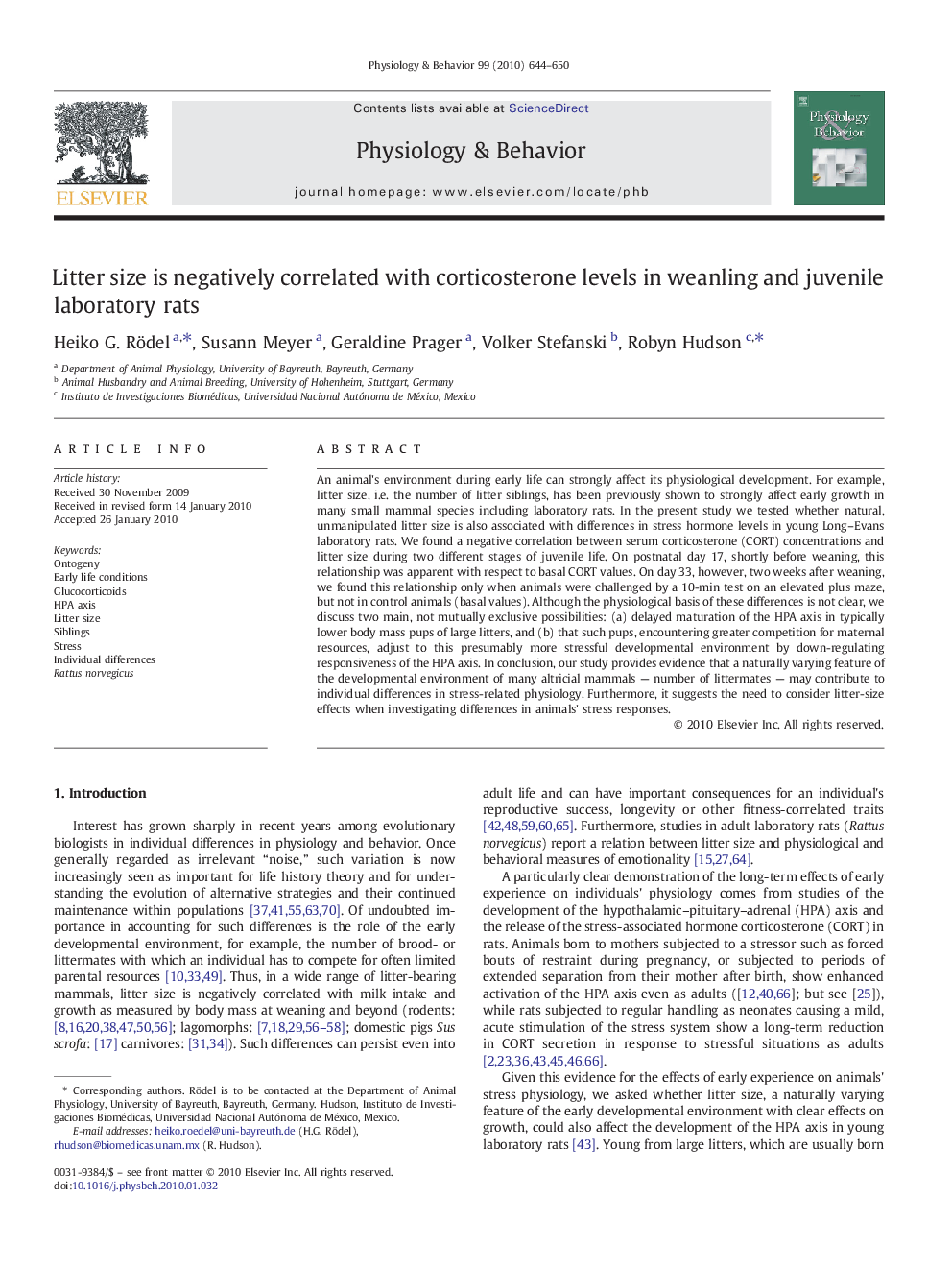| Article ID | Journal | Published Year | Pages | File Type |
|---|---|---|---|---|
| 2844964 | Physiology & Behavior | 2010 | 7 Pages |
Abstract
An animal's environment during early life can strongly affect its physiological development. For example, litter size, i.e. the number of litter siblings, has been previously shown to strongly affect early growth in many small mammal species including laboratory rats. In the present study we tested whether natural, unmanipulated litter size is also associated with differences in stress hormone levels in young Long-Evans laboratory rats. We found a negative correlation between serum corticosterone (CORT) concentrations and litter size during two different stages of juvenile life. On postnatal day 17, shortly before weaning, this relationship was apparent with respect to basal CORT values. On day 33, however, two weeks after weaning, we found this relationship only when animals were challenged by a 10-min test on an elevated plus maze, but not in control animals (basal values). Although the physiological basis of these differences is not clear, we discuss two main, not mutually exclusive possibilities: (a) delayed maturation of the HPA axis in typically lower body mass pups of large litters, and (b) that such pups, encountering greater competition for maternal resources, adjust to this presumably more stressful developmental environment by down-regulating responsiveness of the HPA axis. In conclusion, our study provides evidence that a naturally varying feature of the developmental environment of many altricial mammals - number of littermates - may contribute to individual differences in stress-related physiology. Furthermore, it suggests the need to consider litter-size effects when investigating differences in animals' stress responses.
Keywords
Related Topics
Life Sciences
Biochemistry, Genetics and Molecular Biology
Physiology
Authors
Heiko G. Rödel, Susann Meyer, Geraldine Prager, Volker Stefanski, Robyn Hudson,
